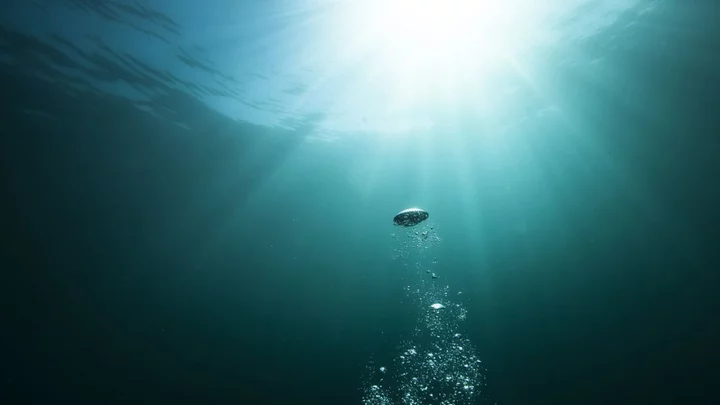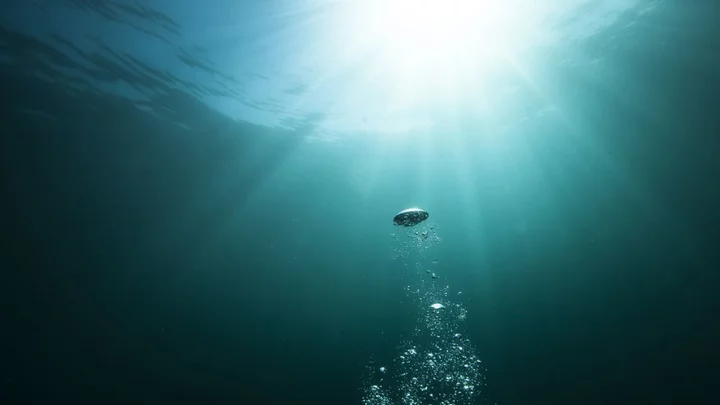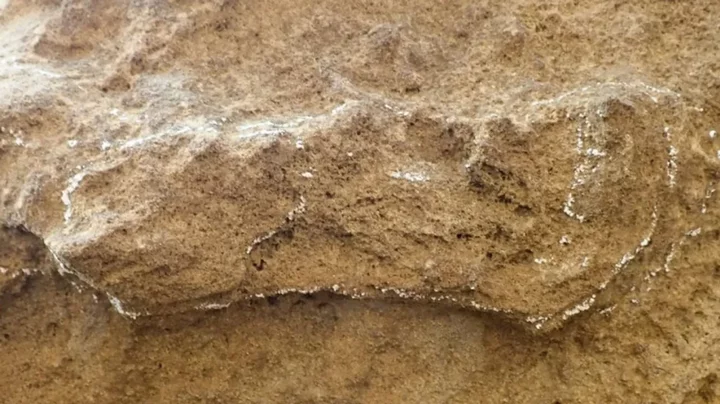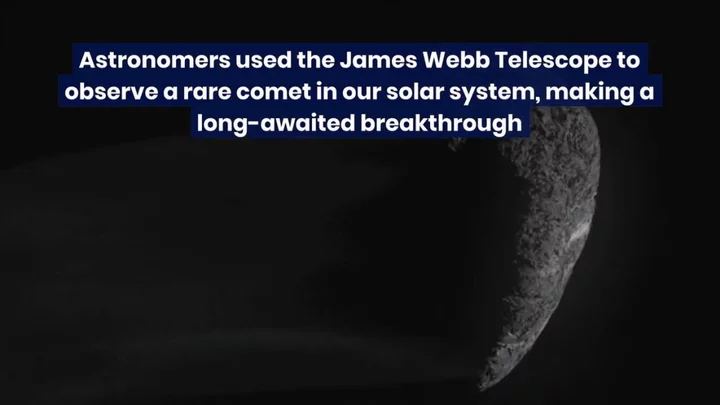
United States media guide
An overview of the media in the United States, including links to broadcasters and newspapers.
2023-06-20 17:15

Scientists found the oldest water on the planet and drank it
If you found water that was more than two billion years old, would your first instinct be to drink it? One scientist did exactly that after finding the oldest water ever discovered on the planet. A team from the University of Toronto, led by Professor Barbara Sherwood Lollar, came across an incredible find while studying a Canadian mine in 2016. Tests showed that the water source they unearthed was between 1.5 billion and 2.64 billion years old. Given that it was completely isolated, it marked the oldest ever found on Earth. Sign up to our free Indy100 weekly newsletter Remarkably, the tests also uncovered that there was once life present in the water. Speaking to BBC News, professor Sherwood Lollar said: “When people think about this water they assume it must be some tiny amount of water trapped within the rock. “But in fact it’s very much bubbling right up out at you. These things are flowing at rates of litres per minute – the volume of the water is much larger than anyone anticipated.” Discussing the presence of life in the water, Sherwood Lollar added: “By looking at the sulphate in the water, we were able to see a fingerprint that’s indicative of the presence of life. And we were able to indicate that the signal we are seeing in the fluids has to have been produced by microbiology - and most importantly has to have been produced over a very long time scale. “The microbes that produced this signature couldn’t have done it overnight. This has to be an indication that organisms have been present in these fluids on a geological timescale.” The professor also revealed that she tried the water for herself – but how did it taste? “If you’re a geologist who works with rocks, you’ve probably licked a lot of rocks,” Sherwood Lollar told CNN. She revealed that the water was "very salty and bitter" and "much saltier than seawater." Have your say in our news democracy. Click the upvote icon at the top of the page to help raise this article through the indy100 rankings.
2023-06-20 14:56

Lab crunch: British science has nowhere to go
By Kate Holton OXFORD, England For Ros Deegan, the thrill of raising $100 million to expand a biotech
2023-06-20 14:52

A scientists found the oldest water on the planet and drank it
If you found water that was more than two billion years old, would your first instinct be to drink it? One scientist did exactly that after finding the oldest water ever discovered on the planet. A team from the University of Toronto, led by Professor Barbara Sherwood Lollar, came across an incredible find while studying a Canadian mine in 2016. Tests showed that the water source they unearthed was between 1.5 billion and 2.64 billion years old. Given that it was completely isolated, it marked the oldest ever found on Earth. Sign up to our free Indy100 weekly newsletter Remarkably, the tests also uncovered that there was once life present in the water. Speaking to BBC News, professor Sherwood Lollar said: “When people think about this water they assume it must be some tiny amount of water trapped within the rock. “But in fact it’s very much bubbling right up out at you. These things are flowing at rates of litres per minute – the volume of the water is much larger than anyone anticipated.” Discussing the presence of life in the water, Sherwood Lollar added: “By looking at the sulphate in the water, we were able to see a fingerprint that’s indicative of the presence of life. And we were able to indicate that the signal we are seeing in the fluids has to have been produced by microbiology - and most importantly has to have been produced over a very long time scale. “The microbes that produced this signature couldn’t have done it overnight. This has to be an indication that organisms have been present in these fluids on a geological timescale.” The professor also revealed that she tried the water for herself – but how did it taste? “If you’re a geologist who works with rocks, you’ve probably licked a lot of rocks,” Sherwood Lollar told CNN. She revealed that the water was "very salty and bitter" and "much saltier than seawater." Have your say in our news democracy. Click the upvote icon at the top of the page to help raise this article through the indy100 rankings.
2023-06-19 22:45

No one has been able to handle more than 45 minutes alone in this room
We all crave a bit of peace and quiet every now and then; just some time to be alone with our thoughts. But silence isn’t as golden as we’ve been led to believe, according to the people who’ve been to the quietest place on Earth. You might expect this to be in a remote part of some great desert whereas, in actual fact, it’s located in a research lab in Minnesota. Inside the anechoic chamber at Orfield Laboratories, it is so silent you can hear your own blood flowing and bones moving. Sign up for our free Indy100 weekly newsletter Made of 3.3ft-thick fibreglass acoustic wedges and double walls of insulated steel and thick concrete, the room absorbs 99.99 per cent of sound. The conditions within its Fort Knox-style walls are so intense that the longest amount of time anyone’s been able to endure in there is 45 minutes. “We challenge people to sit in the chamber in the dark,” the lab’s founder Steven Orfield told Hearing Aid Know. “When it’s quiet, ears will adapt. The quieter the room, the more things you hear. You’ll hear your heart beating, sometimes you can hear your lungs, hear your stomach gurgling loudly. “In the anechoic chamber, you become the sound." What he means by this is that, with the absence of external noise, your ears are forced to adapt to unimaginable silence and start to focus inwards on your own mind and bodily functions. Furthermore, after as little as 30 minutes subjects begin to hallucinate. Orfield explained that it is also impossible to stay in the room for more than half an hour without sitting down because a person’s orientation is largely grounded in the sounds they make when moving. "How you orient yourself is through sounds you hear when you walk," he told the Daily Mail. In the anechoic chamber, you don't have any cues. "You take away the perceptual cues that allow you to balance and manoeuvre. If you're in there for half an hour, you have to be in a chair." The Quietest Place on Earth: Orfield Laboratories youtu.be For anyone who reckons they could top that 45-minute record, it is possible to experience the chamber for yourself. The Laboratories offer a tour, named “The Anechoic Experience”, which enables participants to take on the challenge, provided they’re willing to fork out a cool $600 (around £470) per hour for the privilege. The Orfield website states: “We have witnessed many seeming miracles, some of which have explanations and some of which remain mysteries, as a result of time spent in our anechoic chamber. “We remain curious about the nature of the chamber's impact on all people, its therapeutic properties, and how it can influence human perception. While anechoic chambers are traditionally used to study products, ours is becoming also about the people. “The Anechoic Experience is designed to be an opportunity to personally inquire about the chamber's therapeutic and spiritual effects.” We reckon we might be better off just lying in bed with the duvet over our heads next time we want a moment's peace. Have your say in our news democracy. Click the upvote icon at the top of the page to help raise this article through the indy100 rankings.
2023-06-19 21:45

Scientists think there could be an 'anti-universe’ where time runs backwards
It sounds like something straight out of a Christopher Nolan film, but scientists have suggested that there could actually be an 'anti-universe' where time runs backwards. And if you’re anything like us, your brain is probably starting to hurt already. It comes from experts studying symmetries, and the new research is all to do with the fundamentals of symmetry in nature – the most significant of which are charge, parity and time. Bear with us… According to LiveScience, a new paper recently accepted for publication in the journal Annals of Physics suggests that there is a combined symmetry to the entire universe. Sign up to our new free Indy100 weekly newsletter As the research attests, the early universe was so uniform that time looks symmetric going backwards and forwards. The paper argues that the way we understand the world and wider universe around us, moving forwards in time, must also be expanded to include a mirrored version which runs backwards in time. It could also provide a deeper understanding of dark matter, too. The theory suggests that it is an invisible particle which only interacts via gravity and provides a pairing to the electron-neutrino, muon-neutrino and tau-neutrino. The research suggests that the conditions in a mirrored universe where time runs backwards would be full of these paired neutrinos, which would account for dark matter. Of course, we’d never be able to experience time running backwards even if it did definitely exist, but it’s a pretty cool theory none-the-less. It comes after Elon Musk made headlines in the world of science and space travel, after giving his estimation for when humans will land on Mars for the first time. The first moon landing famously took place in 1969, but space enthusiasts have been debating when they think the first Mars landing will be – now, the SpaceX CEO thinks we’ll be up there by 2029. Have your say in our news democracy. Click the upvote icon at the top of the page to help raise this article through the indy100 rankings.
2023-06-19 00:19

Can you find which letter 'G' is written correctly? Most people can't
We use letters every day of our lives, but apparently, there's one lowercase letter that we do not recognise. Psychologists at Johns Hopkins University have discovered that most people aren't aware that there are two types of the lowercase letter g. One of them is the open tail 'g' which most of us would have written out by hand with its image comparable to "a loop with a fishhook hanging from it. Sign up to our free Indy100 weekly newsletter Then, there is the loop tail 'g' which appears in print form e.g. books and newspapers as well as in Serif fonts such as Times New Roman and Calibri - we've all seen this type of letter millions of times, but it seems remembering it is an entirely different challenge altogether. There were 38 volunteers in the study published by the Journal of Experimental Psychology: Human Perception & Performance and they were asked to list letters that they thought had two variations in print. In the first experiment, "most participants failed to recall the existence of looptail g" while only two people could write looptail g accurately. "They don't entirely know what this letter looks like, even though they can read it," co-author Gali Ellenblum said. Next participants were asked to look for examples of the looptail g in the text and were asked to reproduce this letter style after this and in the end, only one person could do this while half the group wrote an open tail g. Finally, those taking part in the study were asked to identify the letter g in a multiple-choice test with four options of the letter where seven out of 25 managed to do this correctly. So how can we know a letter but not recognised it? It could be to do with the fact we are not taught to write this kind of 'g," according to Michael McCloskey, senior author of the paper. "What we think may be happening here is that we learn the shapes of most letters in part because we have to write them in school. 'Looptail g' is something we're never taught to write, so we may not learn its shape as well," he said. "More generally, our findings raise questions about the conditions under which massive exposure does, and does not, yield detailed, accurate, accessible knowledge." In a play-along video on John Hopkin's YouTube channel, four different g's labelled from one to four appear on the screen where it asked viewers to guess which is the correct looptail 'g'. (*Spoiler ahead*) The correct answer is number 3. Meanwhile, this study has also led research to question the impact that writing less and using more devices has on our reading abilities. "What about children who are just learning to read? Do they have a little bit more trouble with this form of g because they haven't been forced to pay attention to it and write it?" McCloskey said. "That's something we don't really know. Our findings give us an intriguing way of looking at questions about the importance of writing for reading..." Have your say in our news democracy. Click the upvote icon at the top of the page to help raise this article through the indy100 rankings.
2023-06-18 23:59

Why are major streamers joining Kick from Twitch?
Twitch streamers are leaving the platform in their droves in favour of rival website Kick which is offering far more lucrative financial opportunities to their competitors. Kick, which is owned by online gambler Tyler ‘Trainwreck’ Niknam, who previously made his name on Twitch, is very similar in style and content that you would find on other streaming sites with gaming being a major source of entertainment on the website. However, unlike Twitch, gambling and more adult-themed content are more widely accepted on Kick, which was only launched in January 2023. Last month, two big streaming stars Kai Cenat and iShowSpeed both announced that they would be leaving Twitch to join Rumble, another streaming platform that is popular with political commentators. Sign up to our free Indy100 weekly newsletter Now the exodus of streamers from Twitch has continued with reportedly more than one million people joining Kick after the New York Times reported that the website had signed Félix 'xQc' Lengyel, one of the world's most popular streamers, for a $100 million deal. However, xQc, has confirmed that he'll still use Twitch for his streams. In addition to xQc, Twitch's top female streamer Amouranth has also ditched Twitch for Kick in what is thought to be a non-exclusive deal with the site. In an announcement video where she is reading about xQc's deal with Kick, Amouranth says: "So, 100 million dollar deals have started… Can I get one of those?" Numerous other streamers, including Mizkif, have also spoken out against Twitch, claiming that the streaming site is 'done.' Interestingly, MrBeast, who is more of a YouTube content creator than a streamer has floated the idea of streaming on Kick in a form of protest against Twitch's new guidelines which are likely to put in place major restrictions on branded content come July 1st. In a now-deleted tweet, MrBeast, real name Jimmy Donaldson, wrote: "I’m not even a Twitch streamer and now I want to stream on a competitor just to spite them for you guys. If YouTube pulled this sh*t, I’d lose my mind." Other notable steamers who have left Twitch for Kick, include Adin Ross, Destiny, CorinnaKopf and GMHikaru. Speaking to Sportskeeda in May, Kick co-founder Ed Craven confirmed that the company plans to host in-person events in the future as well as gambling streams.
2023-06-18 23:24

AI has imagined what the Simpsons would look like if they were real modern people
By now we've seen what AI is capable of especially when its dealing with beloved cultural figures but a new take on The Simpsons might have gone too far according to some fans. Previously, AI has shown us what the likes of The Simpsons and The Avengers would have looked like if they were sitcoms in the 1980s. Well, thanks to Midjourney and one Reddit user we now know what the various Simpsons characters could look like if they were real people living in 2023. Over on the Midjourney subreddit @Crows_HeadIC shared what happened when they asked the AI image generator to reimagine the Simpsons as modern-day characters. Sign up to our free Indy100 weekly newsletter The post has 20 different images and features all the main Simpsons family as well as other favourites such as Ned Flanders, Mr Burns, Patty and Selma, Apu, Smithers, Principal Skinner, Moe, Lenny and Carl. My take on the real life Simpsons by u/Crows_HeadIC in midjourney One of the biggest talking points on the thread was about the recreation of Marge who now has tattoos and a long blue hair, instead of a tall vertical bonnet. One person said: "Marge is the only one that doesn’t work. Everyone else is great." Another wrote: "I struggled a lot with Marge. But why not give her a modern edge." However, another person disagreed adding: "Marge is hot AF." Consensus was split on the other characters too with some loving the redesigns and others not being convinced. One user wrote: "Homer doesn't resemble anything like him except the baldness." Another said: "Flanders and Comic Book Guy are bang on." A third added: "Damn, Lenny Carl and Skinner got mad glow ups." Have your say in our news democracy. Click the upvote icon at the top of the page to help raise this article through the indy100 rankings.
2023-06-18 18:25

Scientists have worked out the most common days of the week for heart attacks
Research has been revealed that shows which day of the week heart attacks are most likely to take place. According to a new study, the most severe types of heart attacks are more common on Mondays than any other day. STEMI attacks are the most severe forms of attacks, which are caused by a blockage of the coronary artery and see an interruption to the blood supply. A total of 10,528 patients were analysed as part of new research, with the study focusing hospital cases in Ireland and Northern Ireland between 2013 and 2018. Sign up to our free Indy100 weekly newsletter The findings were presented at the British Cardiovascular Society (BCS) conference in Manchester. The data shows that the risk of an STEMI-type heart attack were 13 per cent greater on a Monday compared to the average of other days. Cardiologist Jack Laffan from the Belfast Health and Social Care Trust said at the conference: "We've found a strong statistical correlation between the start of the working week and the incidence of STEMI. This has been described before but remains a curiosity." Laffan also considers it likely that the natural cycle of weeks, months and seasons has on our health. He said: "Based on what we know from previous studies, it is reasonable to presume a circadian element". Nilesh Samani, medical director at the British Heart Foundation, added: "This study adds to evidence around the timing of particularly serious heart attacks, but we now need to unpick what it is about certain days of the week that makes them more likely. "Doing so could help doctors better understand this deadly condition so we can save more lives in future." It comes after a woman revealed how when she was a teenager she mistook a heart attack for butterflies, after dancing with a boy for the first time. Have your say in our news democracy. Click the upvote icon at the top of the page to help raise this article through the indy100 rankings.
2023-06-18 14:18

Study of oldest footprint ever may change the entire history of humanity
It’s not often that a single scientific discovery manages to change the way we think about the entire history of humanity. An ancient footprint has been newly uncovered, and it turns out that humans were walking around 30,000 years earlier than we previously thought. Two-legged homo sapiens were living in South Africa, it’s been proven, following the discovery of a 153,000 year old track. It was found in the Garden Route National Park near the coastal town of Knysna on the Cape South Coast. Sign up to our free Indy100 weekly newsletter The footmarks outdate the oldest previous discoveries, with the previous oldest found in nearby areas dated at 124,000 years old. The discoveries were made possible thanks to the optically-stimulated luminescence dating method, which analyses how long it’s been since a grain of sand has been exposed to sunlight. Researchers Charles Helm of Nelson Mandela University and the University of Leicester's Andrew Carr wrote in the Conversation: "In 2023, the situation is very different. It appears that people were not looking hard enough or were not looking in the right places. "Today, the African tally for dated hominin ichnosites (a term that includes both tracks and other traces) older than 50,000 years stands at 14. "Given that relatively few skeletal hominin remains have been found on the Cape coast, the traces left by our human ancestors as they moved about ancient landscapes are a useful way to complement and enhance our understanding of ancient hominins in Africa." The scientists involved believe that the area could be home to many illuminating discoveries given the makeup of the soil. They wrote: "We suspect that further hominin ichnosites are waiting to be discovered on the Cape South Coast and elsewhere on the coast. "The search also needs to be extended to older deposits in the region, ranging in age from 400,000 years to more than 2 million years. "A decade from now, we expect the list of ancient hominin ichnosites to be a lot longer than it is at present – and that scientists will be able to learn a great deal more about our ancient ancestors and the landscapes they occupied." Have your say in our news democracy. Click the upvote icon at the top of the page to help raise this article through the indy100 rankings.
2023-06-16 21:29

Mystery origin of Earth's water has finally been solved
Ever wondered how water first arrived on our planet? Well, it turns out the mystery could finally have been solved. Researchers have undertaken detailed analysis of asteroids and the findings could change the way the scientific community think about origins of water on our planet. Experts at the University of Arizona's Lunar and Planetary Laboratory (LPL) have discovered salt crystals on samples recovered from space. As their findings state, these crystals could only have formed with the presence of water. Sign up to our free Indy100 weekly newsletter The research was undertaken on samples of the asteroid Itokawa in 2005 by the Japanese Hayabusa mission. It suggests that S-type asteroids could be home to more water than previously thought. The new findings led some scientists to claim that water is likely to have arrived on asteroids when our planet was first being formed. The senior’s author Tom Zega said: "The grains look exactly like what you would see if you took table salt at home and placed it under an electron microscope. "They're these nice, square crystals. It was funny, too, because we had many spirited group meeting conversations about them, because it was just so unreal. Zega added: "It has long been thought that ordinary chondrites are an unlikely source of water on Earth. Our discovery of sodium chloride tells us this asteroid population could harbour much more water than we thought." Itokawa is a S-type asteroid, and it’s thought that temperatures on their surfaces were too high for water to form. Shaofan Che, who is the lead study author, said: "In other words, the water here on Earth had to be delivered from the outer reaches of the solar nebula, where temperatures were much colder and allowed water to exist, most likely in the form of ice. "The most likely scenario is that comets or another type of asteroid known as C-type asteroids, which resided farther out in the solar nebula, migrated inward and delivered their watery cargo by impacting the young Earth." Have your say in our news democracy. Click the upvote icon at the top of the page to help raise this article through the indy100 rankings.
2023-06-16 20:20
